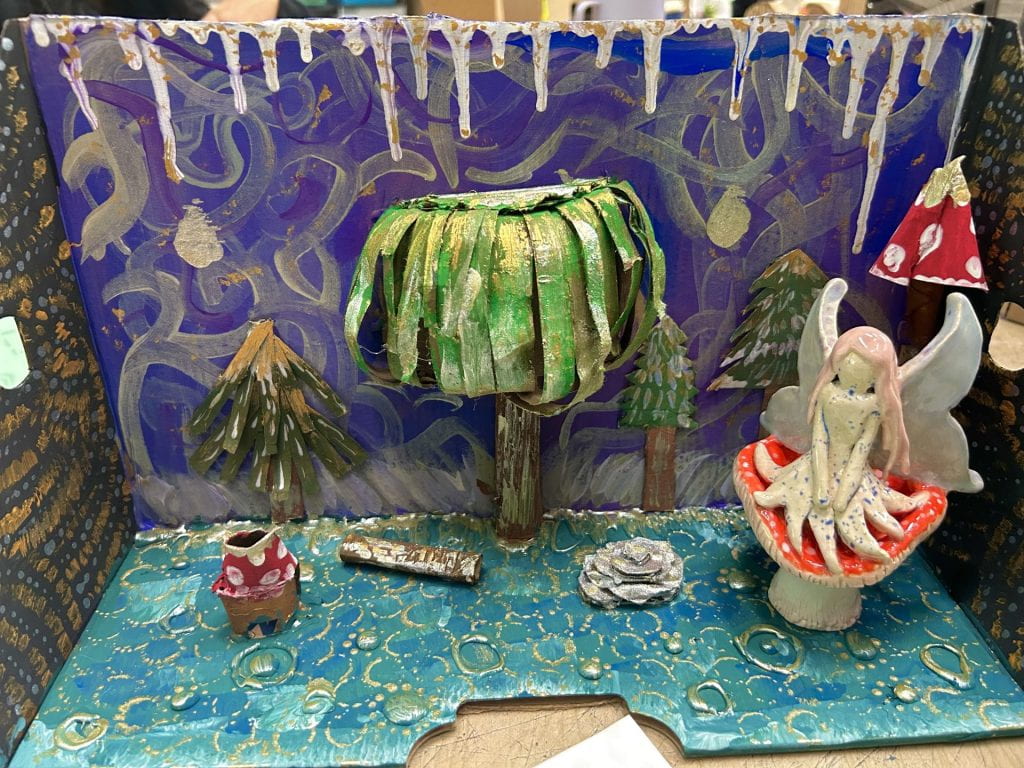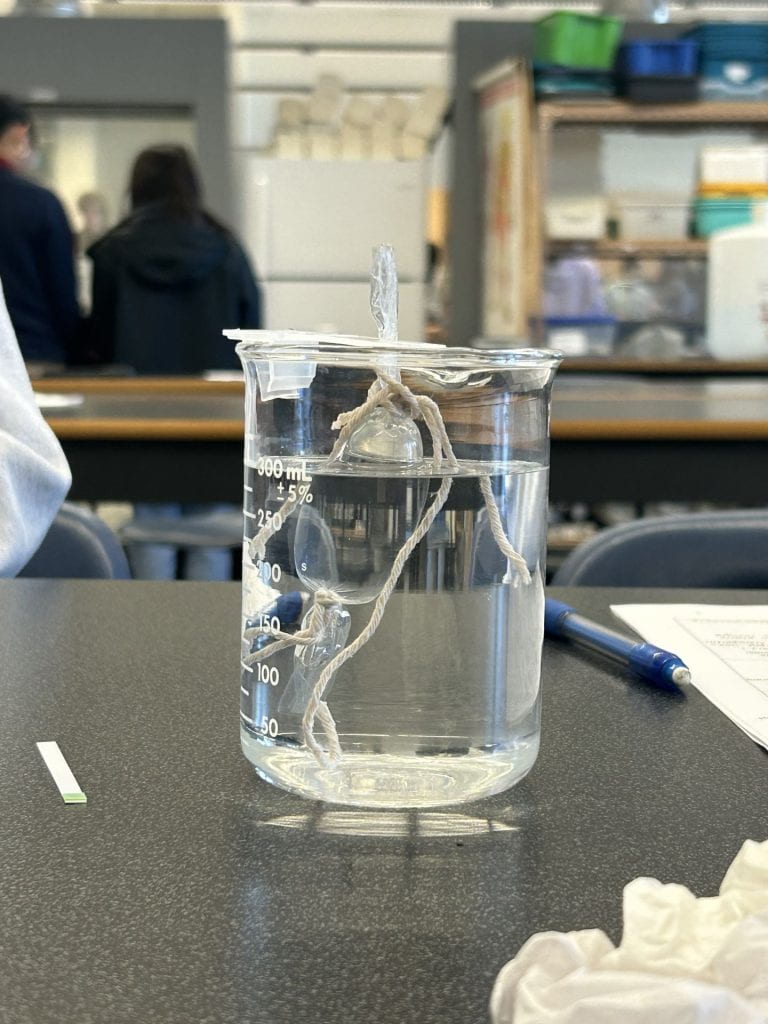
Collaboration:
For this project I showed collaboration skills when I asked my peers for inspiration or positive criticism or any other ideas regarding my piece. If I ever had trouble deciding on a certain colour or design of something, I collaborated with the people at my table group to help me form my final piece. Specifically, I used this skill when it came to where I should glue certain card board pieces and where in my setting I should place my clay model. Because we were all sharing the glue gun, we took turns with it and they helped me choose where to glue my cardboard details. In the end, I am proud of what I created and I am happy that I was able to get some advice from my peers to enhance my project.
Critical and Reflective Thinking:
For this project, I demonstrated critical and reflective thinking when molding my clay fairy. For instance, the hair strands of my fairy were beginning to fall and break off as it dried. To fix this, I restarted the head of hair and made it so the hair was a bit thicker and not as long. I also added a lot of slip so that each strand was secured in place. Another issue that I had to face was that my clay mushroom was a bit wobbly. This was happening because the support cap of the mushroom was quite large compared to the stem/base. It had to be fairly big so that the fairy could fit and sit on top of it so instead of shrinking the cap, I added some clay to the very base of the mushroom. Adding more structure to the base allowed for the mushroom to hold up the fairy












